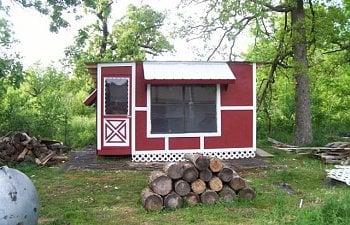Pallet Palace
Chicks love it!
Thanks to all at BYC for advice and tips. Also thanks to BYC for the #1 vote in Coop Design Contest!

This originally started out as a wood shed, so there are no early construction pictures. This was built using 22 standard oak pallets. Making sure you use the same make of pallets is very helpful. If one is different this makes putting up interior and exterior walls very difficult. Chicks love it!
Thanks to all at BYC for advice and tips. Also thanks to BYC for the #1 vote in Coop Design Contest!
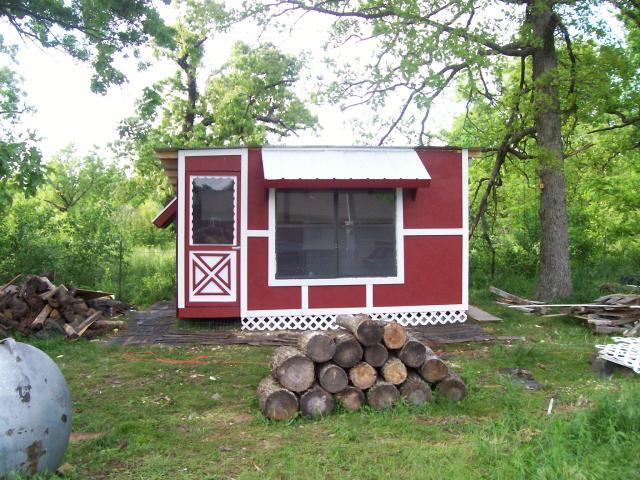
- Back wall - 8 pallets = 8' x 16"
- Side walls - 4 pallets = 8' x 8'
- Front wall - 6 pallets = 8' x 16' (leaving opening for door)
Walls and Roof:
For all the walls I started by laying 4 skids in a square. Start by building back side first. Make sure area is flat as possible so skids line up top and bottom. Screw the 2 skids laying side by side together through the side boards. After 2 sets are screwed together now join the 2 halves. You can either toe in screws joining them or run a couple 2x4's through the side of top 2 and joining bottom 2. After you're all attached you can stand your wall up (another person helps here). It helps if bottom of wall is close to where it will be set so that when you stand it it is close to it's permanent position. Brace the wall by attaching 2x4's to sides and wedge in the ground until you're ready to attach side walls.Repeat the steps for sides and front wall. Front wall is a little different being you're only attaching 6 skids and it will not reach side wall. this will be the opening for your door.
Once your walls are joined and standing you can start screwing them all together. This is where a level comes in handy. Get the back wall level as possible and attach side wall to it by screwing together or by 2x4 inside. Make sure if you set wall on the inside of the back wall, forming an L, you do the same on the opposite side.
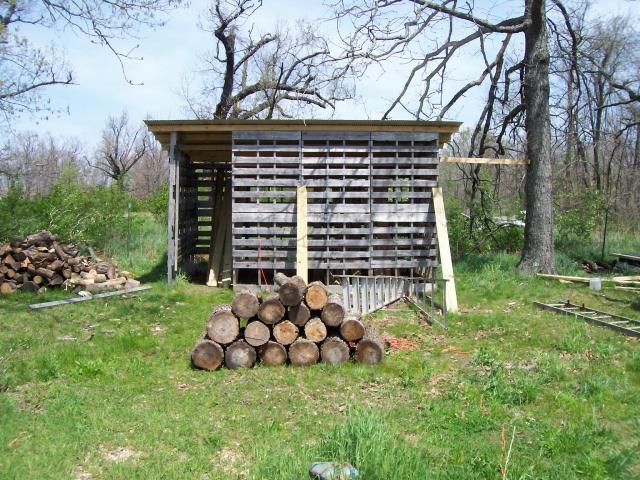
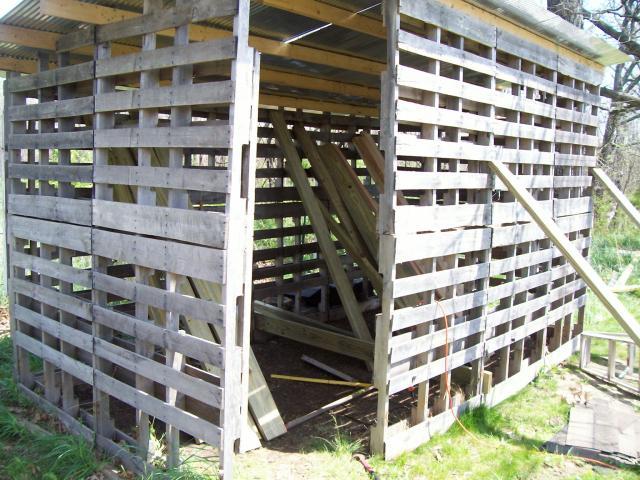
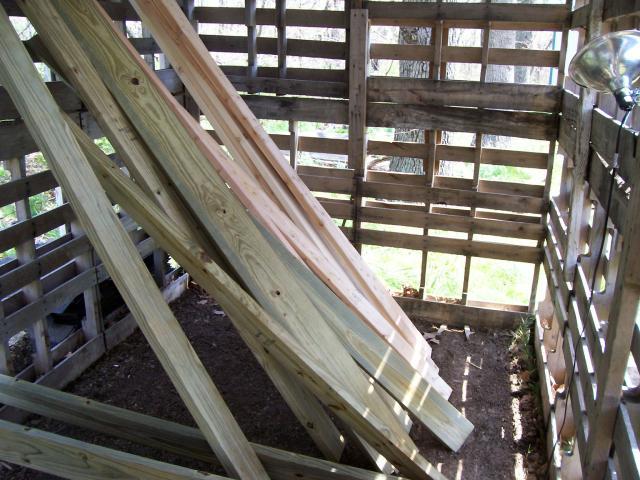
Roof is 5 - 2x4x20 running from side to side (I used tin. If you're wanting to cover with plywood and shingle you will want to run 2x4x10's from front to back). I lowered the back wall to 6' for a slope for roof. I left the center runners on skids to attach my 2x4x20's.
Floor:
For the floor I left the bottom wood of skids intact. I cut away the next horizontal piece of wood above that out. Leave the runners of the skid in place, this is what you will attach your floor boards to. I then ran treated 2x6x8 boards across the bottom and attached the the back and front runners at every 2'. Make sure they are level when you attach them. Also make sure you have boards at the 8' mark for your floor to attach to. I put 2x6 pieces in between the boards in offset pattern for support and I also put pieces along the entire outer square So i could attach floor to them. I put sections for 4x4 under in spots just for added support.
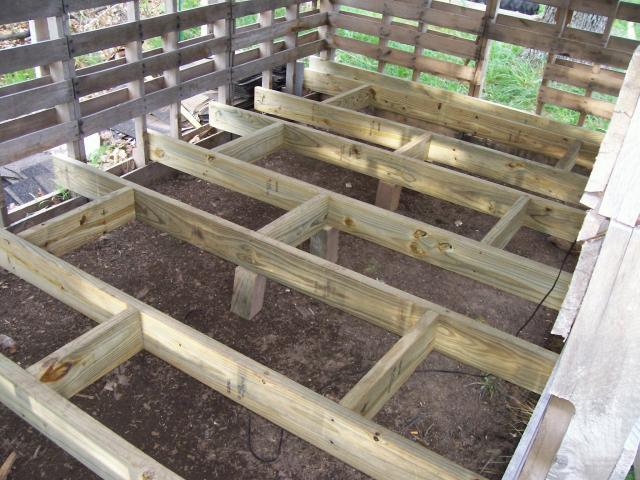
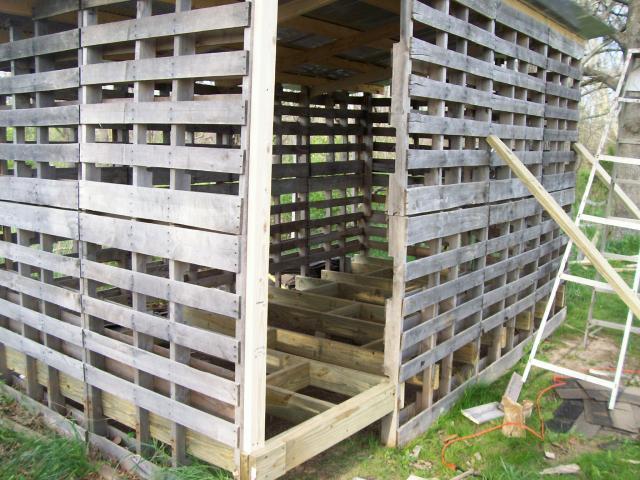
For the floor i used 4x8 3/4" OSB board. This is strictly up to you if you'd rather use plywood. Just lay your boards on top of the 2x6's and screw them on. At this point I also cut out my exit door to the run.
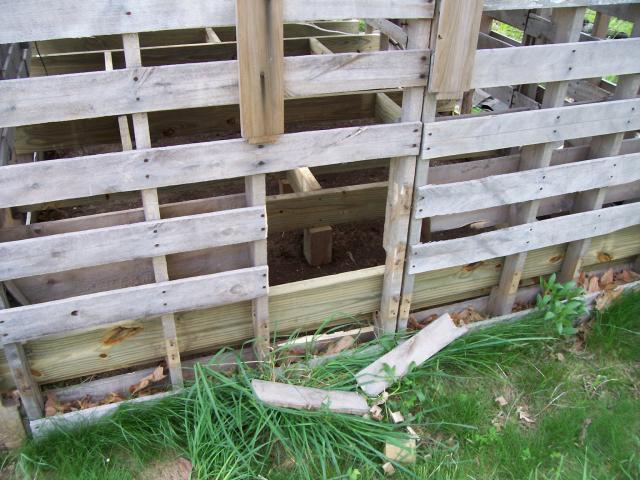
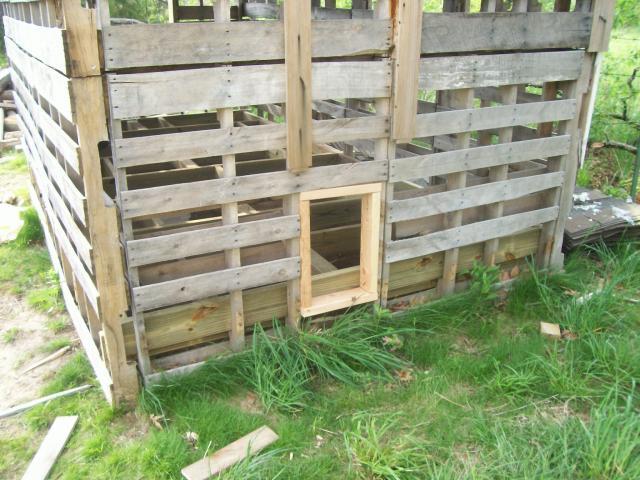
Interior Walls, Windows, Door:
***Important*** Determine where you want your windows now. It is very difficult to cut out the skids once walls are up. Learned that from experience. Cut out and frame your windows before interior walls go up.**** For my windows I cut out size needed then used 1x6 or 2x6 for frames. These seem to fit perfect as frames on pallets.
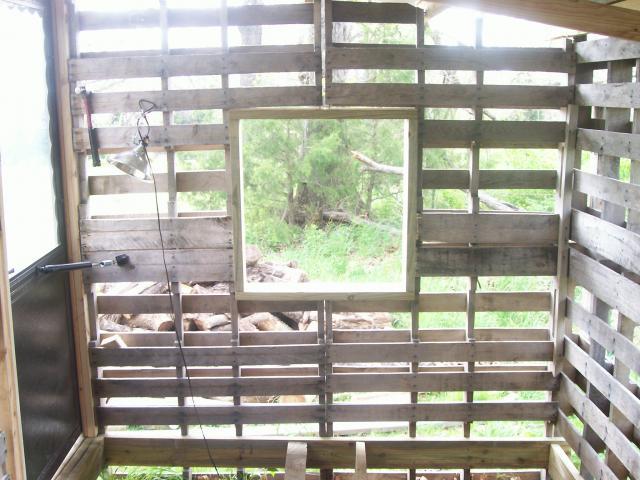
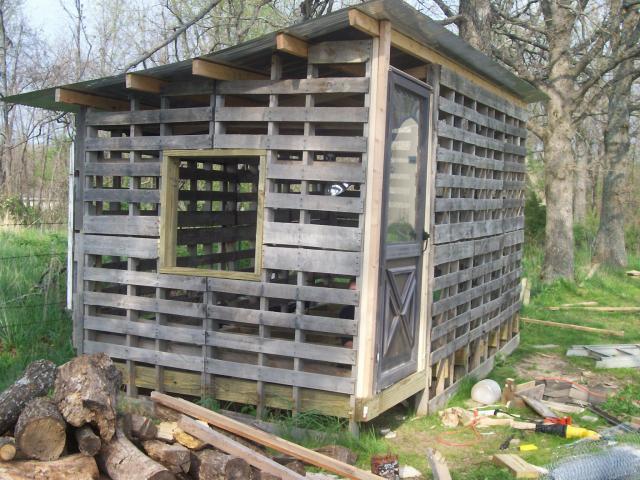
For the interior walls I used 4x8 1/2" OSB. I did front and rear first then side, but either way would be fine. Run any wiring g you may be doing now. I installed 1 light and 1 outlet. Here in our county if you wire to breaker box you have to pay taxes on it, so I used heavy duty extension cord so it can be unplugged if the assessor comes. Now grab your boards and put them up and screw them on. Leave the upper section of the sides open for ventilation. Now you can paint the color of your choosing.
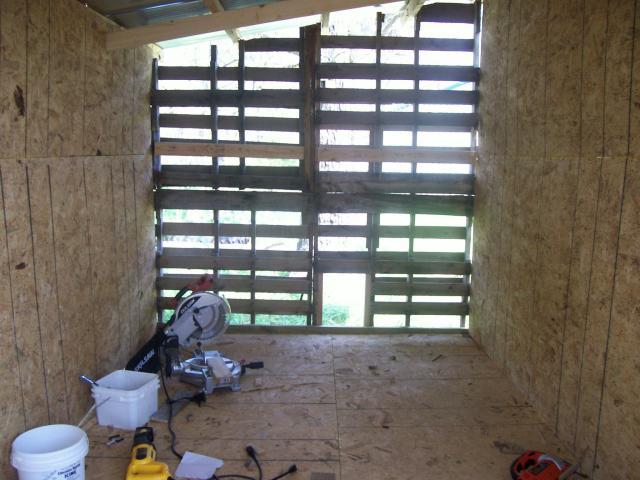
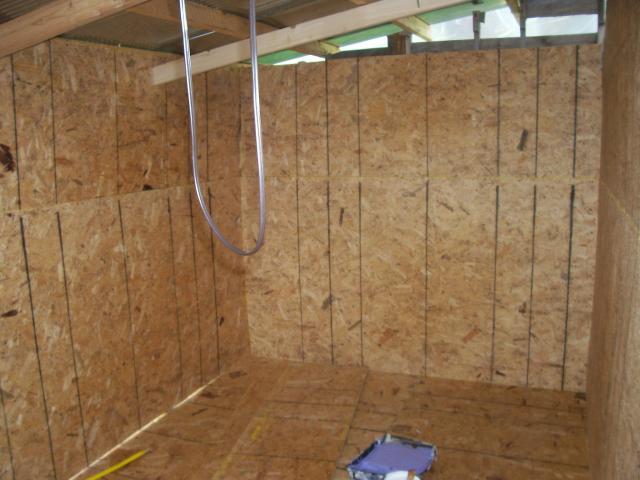
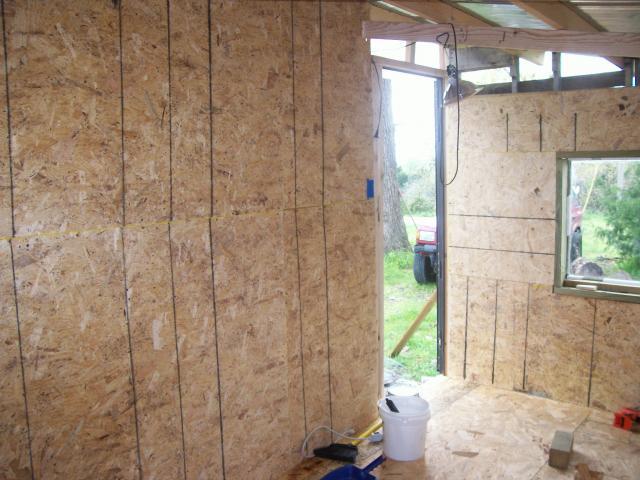
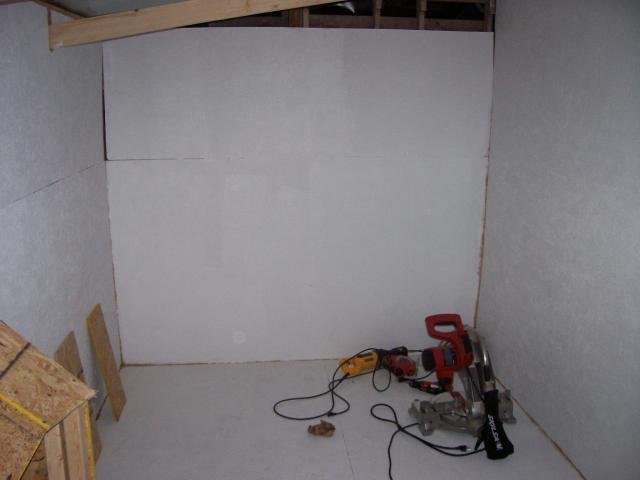
Frame your door making sure all is level and straight. Use 2x4's with shims as needed to get door to open and close flush.
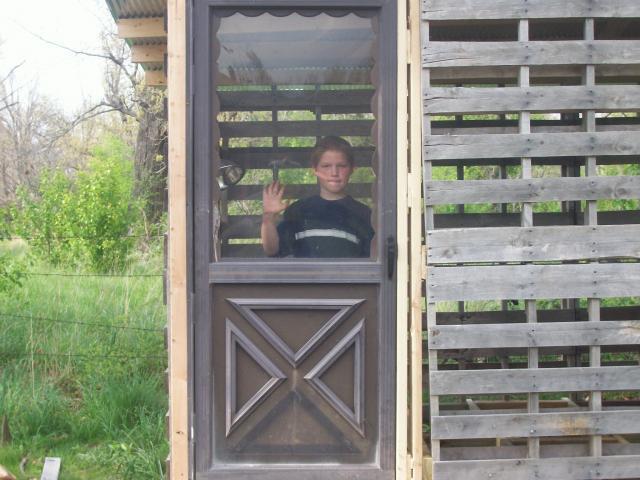
Nesting Boxes:
Ok, I have been told that there are too many boxes here so it's up to you how many you wish to make. I just put 2x4's down on floor 12" apart. I made a rectangle with 1 more middle support. On top of this I put my 1/2 osb board. I attached a 2x2 to the front of the boxes. I used 1x12 from dividers cut 12"x12". Screw dividers into the 2x2 and toe screw into wall in the back. I cut 3 sections of 2x2 for sides and middle for support of next level. Osb on top of your dividers and repeat process. For top I attached a 2x4 to the wall and sloped osb roof for boxes. I used remaining 2x2's to make a small perch between bottom and top. Done! Paint!
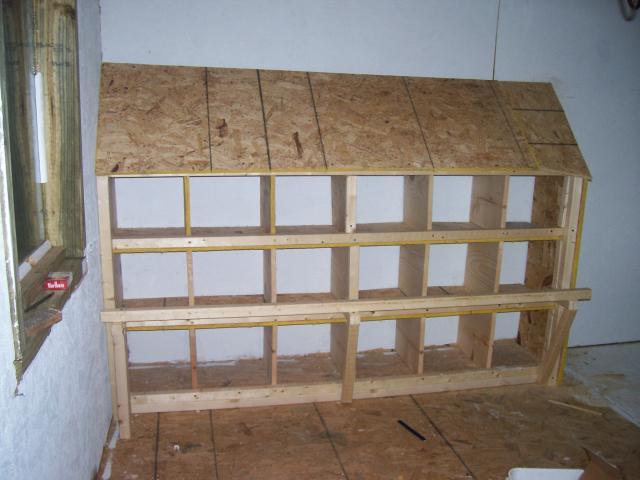
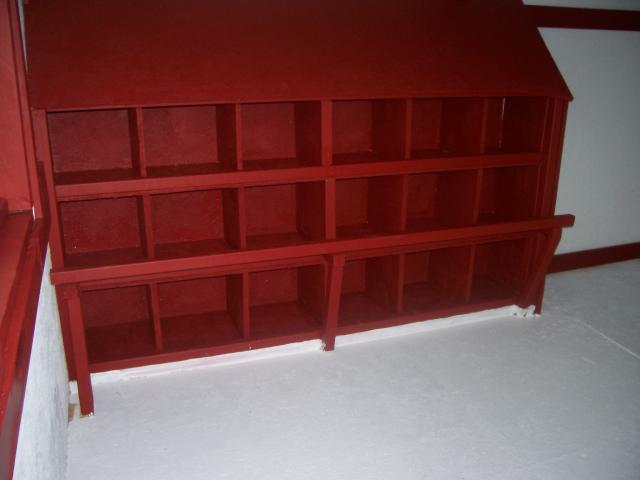
Interior Trim and Roost:
Trimming the inside, or painting is strictly up to you. I used trim to cover the gaps between wall boards I put up. I thought it gave the entire inside an awesome look. 1x4's were used for trim. Painted them red to accent the white.
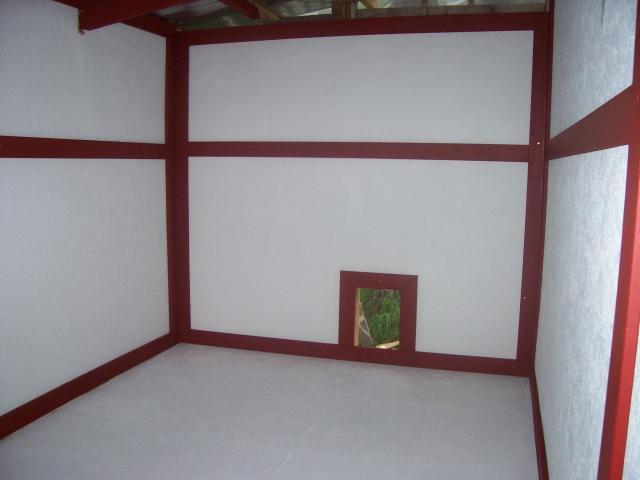
For the roost I set 2x4's across this side up at 3' and 4'. I put flat side 2x4 on top of this. I used pieces of 2x2 on each side of the 2x4 to hold it in place that way I can remove it for cleaning. I also added a small step up roost at 2' for heavier birds to give them a lift.
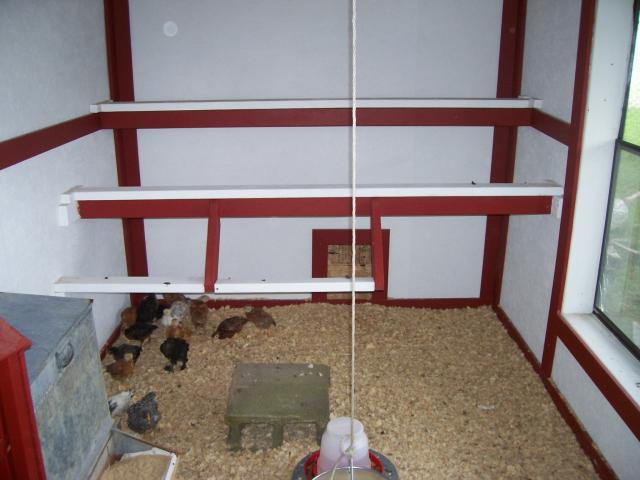
First day in coop.
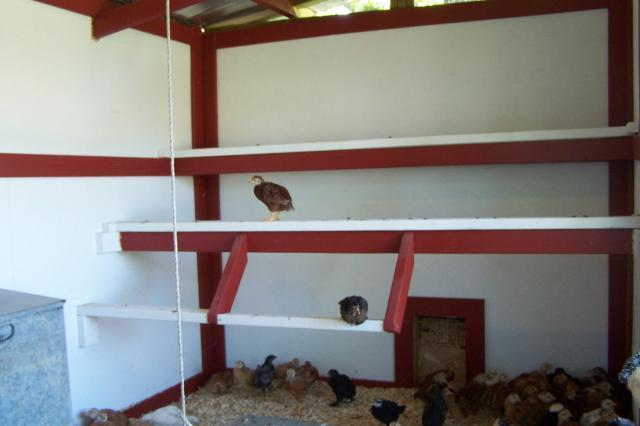
Exterior of coop:
Before you start hanging exterior boards now is the time to predator proof your bottom. I used 25 ga metal wire all the way around coop with 3' apron. Run wire up high enough so that your exterior walls will overlap it. I covered the apron with old roofing shingles to keep weeds down. I will cover this later with dirt.
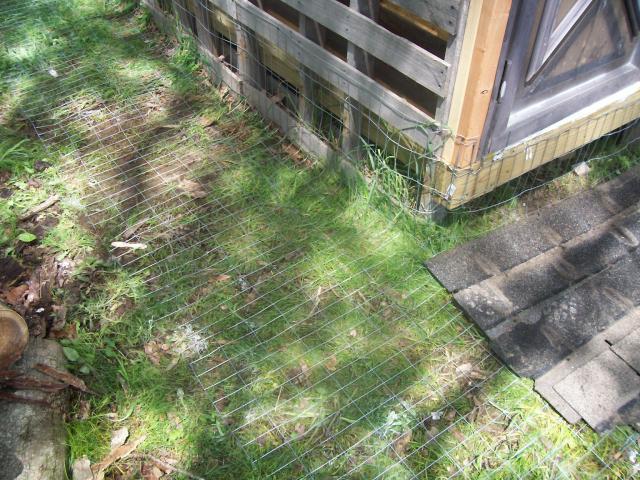
You also want to cover vents at the sides of your coop now. Hang your out side walls the same as you did the interior (just with a lot more room to work). Cut out for windows and run door. I also used trim to cover board gaps on out side using 1x4's and painted white to accent red. I made awnings to cover window by using 1x6's. Cut at 45 degree angle to attach to coop then attached a cross board at the ends. I used some colored tin to cover. I used some left over lattice I had around to cover the bottom of the coop.
Not completely done, but chicks love it!!

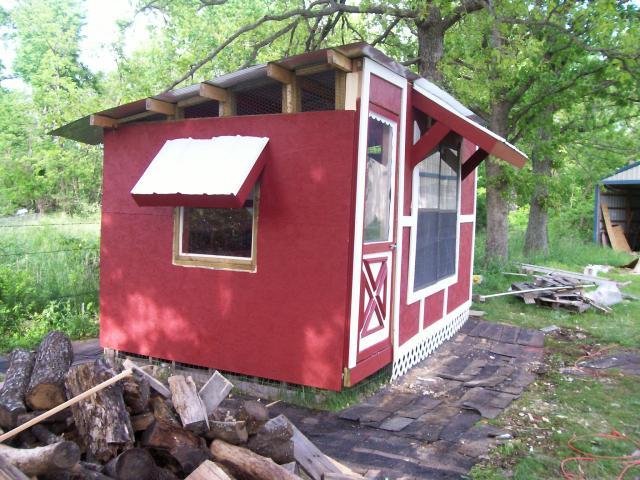
Outside Run:
- 65 = 8' Garden timbers
- 30 = bags of QuickCrete
- 5 = rolls of 36x25 1/2" hardware cloth
- 5 = rolls of 36x50 25 ga welded wire fence
- 3 = 1x6x8 treated for gate
- 1 = gate latch
- 1 = rented auger Home Depot
- 2 = rolls of 7'x100' deer netting
My run was made using 8' garden timbers set 2' deep and set in concrete. Set 17 posts using a rented auger from Home Depot. I cut tops off posts as some were deeper than others do to our rocky soil. The top, bottom, and middle rails are also 8' garden timbers. Middle set at 36" and top at 6' to fit wire.
Bottom wire is 36" 1/2" hardware cloth. Top is 36" 25 ga welded wire. Outside perimiter of run is aproned with 25ga wire also laid out 3' and covered with roofing shingles to keep weeds down.

(Son on lunch break and Lab wanting that lunch)

Chicks first day in run. "That's one small step for a chicken, one giant step for the flock".
Gate is made from 1x6x8 treaded lumber cut to height with 3 dividers for support. I covered gate with 1/2" hardware cloth. Latch is a sliding pin latch that locks into a drilled hole in the post. Coop sets on a slight slope so I put another 1x6 at bottom of gate to cover gap.

Entire top is covered with deer netting. We do have hawks in or area so better safe than sorry. I used roofing butt tabs to hold netting down. They are nails with a green circle plastic tab on them. They worked great on net. (You can see a few in above pic)

First day in run.

This design is great for those of us that don't really understand framing walls, roofs, and other construction aspects of building a coop. It also saves you quite a bit of money on lumber costs for you can get pallets free if you look around. I tend to go overboard, but you can easily go with dirt floor, or no interior walls or trim to cut cost. I hope other find this helpfull for them to get their project started and share in the joy of watching their chicks step out into the real world for the first time.
Thanks for viewing my page.
Jjamerb
If you have any questions feel free to PM me here or drop me and email.
Bottom wire is 36" 1/2" hardware cloth. Top is 36" 25 ga welded wire. Outside perimiter of run is aproned with 25ga wire also laid out 3' and covered with roofing shingles to keep weeds down.
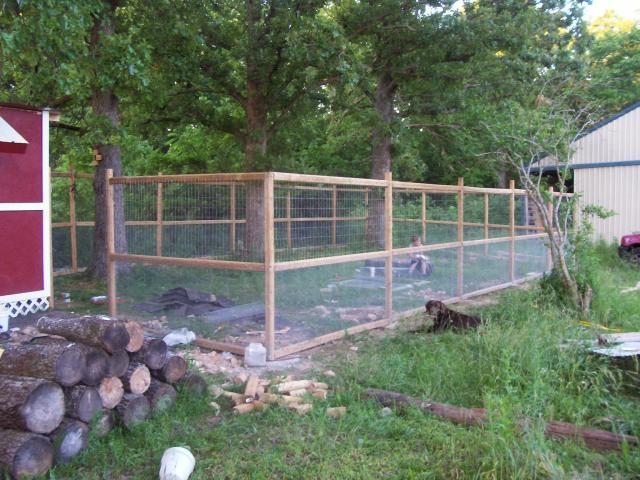
(Son on lunch break and Lab wanting that lunch)
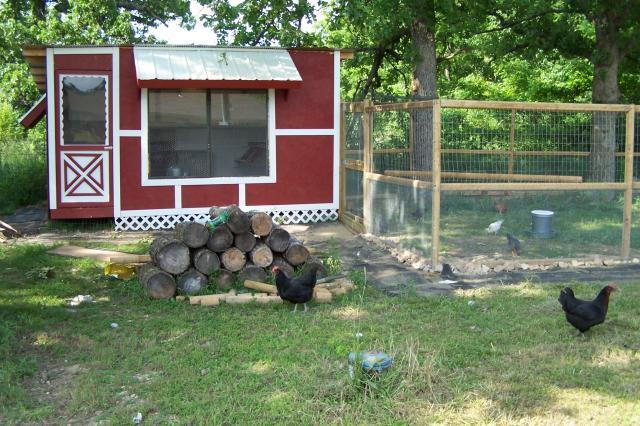
Chicks first day in run. "That's one small step for a chicken, one giant step for the flock".
Gate is made from 1x6x8 treaded lumber cut to height with 3 dividers for support. I covered gate with 1/2" hardware cloth. Latch is a sliding pin latch that locks into a drilled hole in the post. Coop sets on a slight slope so I put another 1x6 at bottom of gate to cover gap.
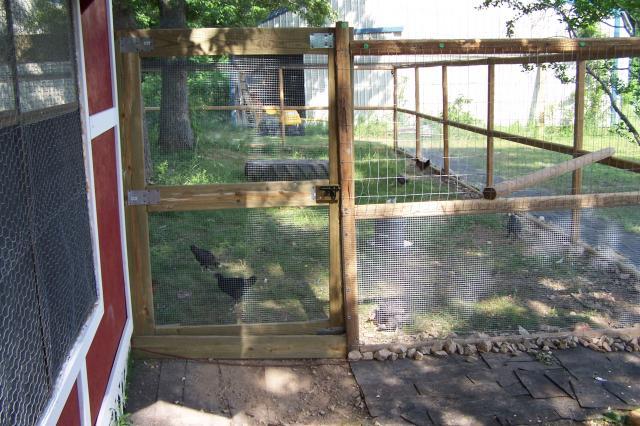
Entire top is covered with deer netting. We do have hawks in or area so better safe than sorry. I used roofing butt tabs to hold netting down. They are nails with a green circle plastic tab on them. They worked great on net. (You can see a few in above pic)
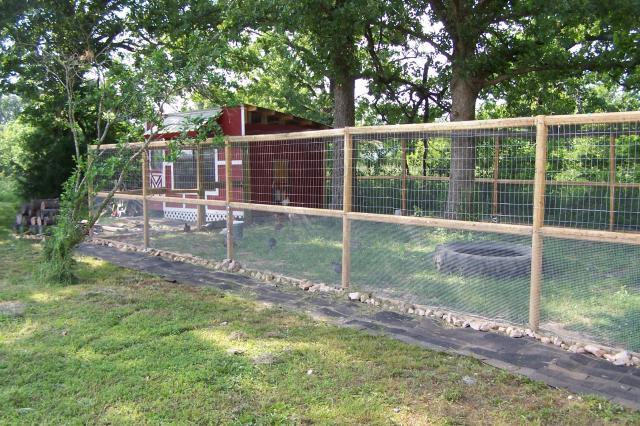
First day in run.
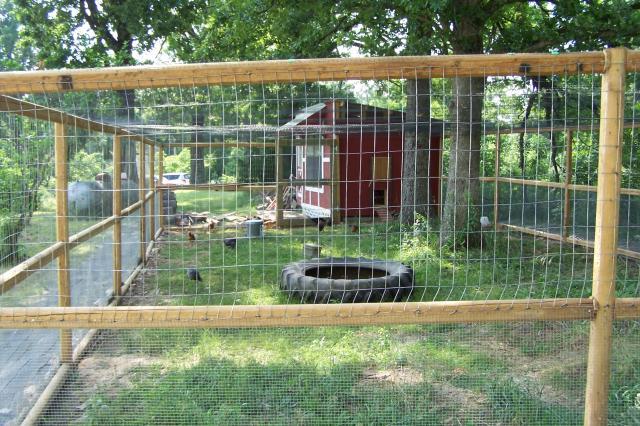
This design is great for those of us that don't really understand framing walls, roofs, and other construction aspects of building a coop. It also saves you quite a bit of money on lumber costs for you can get pallets free if you look around. I tend to go overboard, but you can easily go with dirt floor, or no interior walls or trim to cut cost. I hope other find this helpfull for them to get their project started and share in the joy of watching their chicks step out into the real world for the first time.
Thanks for viewing my page.
Jjamerb
If you have any questions feel free to PM me here or drop me and email.

